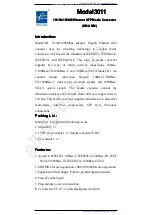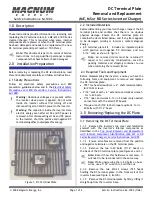
Page 38 Non-Sound Decoder MX618 - MX634 and Sound Decoder MX640 - MX648
MENÜ Functions-SOUND
.
F6 --- SAMPLE ---
((((( play ((((( prev ((((( next
CLEAR --- GROUP ----
((((( + end ((((( prev ((((( next
----- LOOP ----- STORE
((((( loop ((((( short ((((( + end
MENU Random-SOUND
.
Z2 --- SAMPLE ---
((((( play ((((( prev ((((( next
CLEAR --- GROUP ----
((((( + end ((((( prev ((((( next
----- LOOP ----- STORE
((((( still ((((( cruise (((( + end
Sound samples are organized in
groups
for easier location; i.e. groups like “short whistle” / “long
whistle” / “horn” / “bell” / “shoveling coal / “announcements” and much more.
The engine should remain
stationary
though since the
speed regulator
is used
for
volume settings
during the allocation procedure!
Depends on entry: F1 . . . F19
The function keys have the following
special meaning during
the selection procedure!
Drawing of an MX31 display, not a photo!
F0
=
play : plays back the current sound file for evaluation.
F1, F2
=
prev, next : plays back the previous or next recording stored in the decoder.
F4, F5
=
prev, next : switches between sound groups (e.g. whistles, bells etc.); starts playback
with the first sample of this group.
The
SPEED REGULATOR
acts as volume control for the selected sound during allocation procedure.
F6
=
loop :
If F6 is “on” when exiting the allocation procedures, the sound sample is stored
and played back as long as the relevant function key is pressed by
Playable whistle!
repeating the sound between the loop markers (the loop marks are part of
the sound file).
F7
=
short:
If F7 is “on” when exiting the allocation procedures, the sound sample is
shortened and played back only as long as the function key is pressed, by
omitting the center portion.
Note: F6 and F7 are only effective provided the loop markers are included in the sample; basic
settings are also saved; changes take effect only if F6/F7 is actuated.
Note: If F6 and F7 are not actuated, the sound sample will always be played back in the same length
it was saved, regardless how long the function key is pressed.
F3
=
CLEAR + end:
The
allocation procedure
is
stopped
and the current sound removed.
There will be no sound allocated to this function key.
F8
=
STORE + end: The
allocation procedure
is
stopped
and the last selected function
sound is stored and ready for playback when this function key is pressed.
The
allocation procedure
can also be
ended
by any other programming procedure (e.g. CV #300 =
0 or any other value or CV) or by removing power from the decoder. The “old” allocations remain ac-
tive in such cases;
such “forced endings” are also useful when the “old” sound should remain as the
current sound without first having to locate it again.
The selection procedure is supported with
sound signals:
The
“cuckoo jingle”
sounds when….
…. the last stored sound sample of a group is reached; use the appropriate key (F1, F2) to scroll in
the opposite direction to listen to the other stored sounds,
…. the last stored sound group is reached (with F4 or F5); use the appropriate key (F4 or F5) to scroll
in the opposite direction.
…. play-back attempted (with F0) but no sound sample is available,
…. a wrong key is pressed.
The
“confirmations jingle”
is played after ending the allocation procedure with F3 or F8.
Allocation of sound samples to the random generators
Z1…Z8:
MX640 decoders provide 8 simultaneously playing random sound generators. The timing of them is
determined by CV’s; see “CV table” from CV #315.
A sound sample can be added to each random generator from the pool of samples in the decoder.
The
allocation procedure
for random sound
is initiated with a “Pseudo-Programming” in operations
mode programming:
CV #300 = 101
for random generator Z1
(Z1 has special logic incorporated for the compressor
and should therefore always be used for that)
CV #300 = 102
for random generator Z2
CV #300 = 103
for random generator Z3
etc.
.
Depends on entry: Z1 . . . Z8
The function keys have the following special meaning
during the selection procedure!
The meaning and action of the function keys is the same as for function sounds (see above):
F0
=
play: playback
F1, F2
=
prev, next: playback of previous or next sound sample
etc.
but
F6
=
still:
If F6 is active when ending the allocation procedure, the sound sample is played as
random sound at standstill only (default).
F7
= cruise:
If F7 is active when ending the allocation procedure, the sound sample is played
as random sound when the locomotive is moving.
The allocation procedure for random sound is the same as for function sound!
ZIMO cab key arangement:
(((((
1
F0
(((((
2
F1
(((((
3
F2
(((((
4
F3
(((((
5
F4
(((((
6
F5
(((((
7
F6
(((((
8
F7
(((((
9
F8
ZIMO MX31 key arrangement:
(((((
1
F0
(((((
2
F1
(((((
3
F2
(((((
4
F3
(((((
5
F4
(((((
6
F5
(((((
7
F6
(((((
8
F7
(((((
9
F8
















































